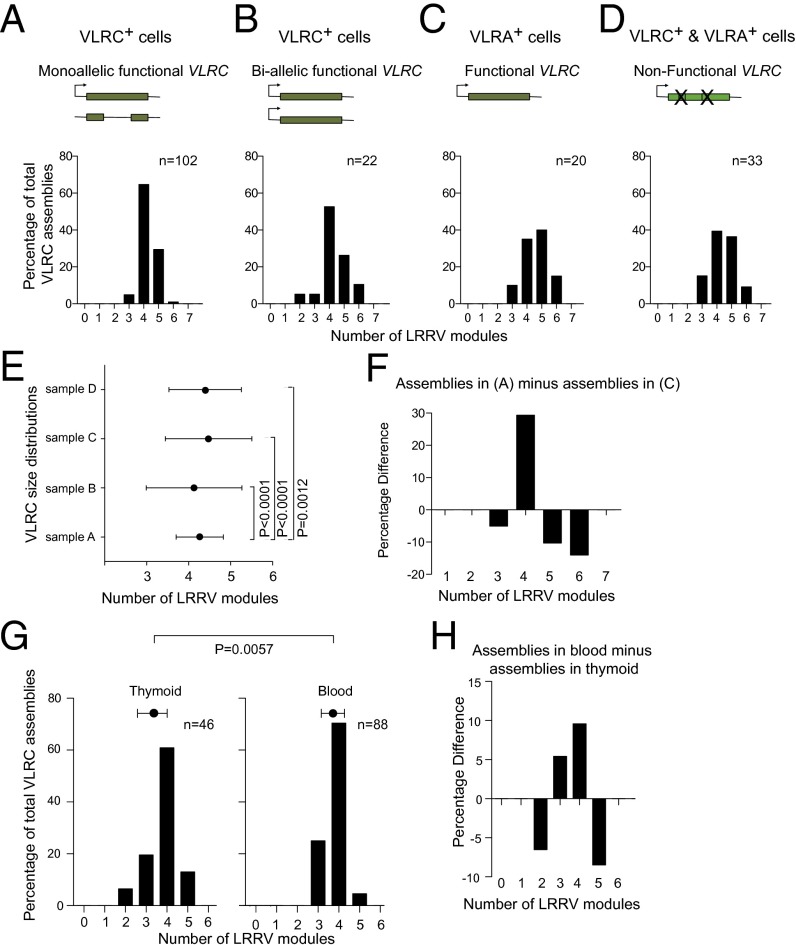Fig. 2.
Functional selection of a preferred LRRV number in VLRC assemblies. VLRA and VLRC assemblies were amplified from single VLRA+ and VLRC+ blood lymphocytes of P. marinus and the number of LRRV modules present in VLRC assemblies determined (A–D). Results are presented for VLRC+ lymphocytes with a monoallelic VLRC assembly (A); VLRC+ lymphocytes with biallelic VLRC assemblies (B); VLRA+ lymphocytes with functional VLRC assemblies (C); and VLRC+ and VLRA+ lymphocytes with complete but nonfunctional VLRC assemblies (symbolized by Xs) (D) (Dataset S1). (E) Summary of the average number of LRRV modules present in the different collections of VLRC assemblies presented in A–D. Error bars represent the SDs of the means; differences of variances were assessed using the F test. (F) Percentage difference in LRRV number between VLRC assemblies in A and C shows enrichment of the preferred size of four internal LRRV modules. (G) Distributions of the number of LRRV modules in VLRC assemblies in the thymoid (Left) and peripheral blood (Right) of L. planeri. Error bars represent SDs of the means; differences of variances were assessed using the F test. (H) Percentage difference in LRRV number between blood and thymoid in G indicates enrichment of the preferred size of four internal LRRV modules.

